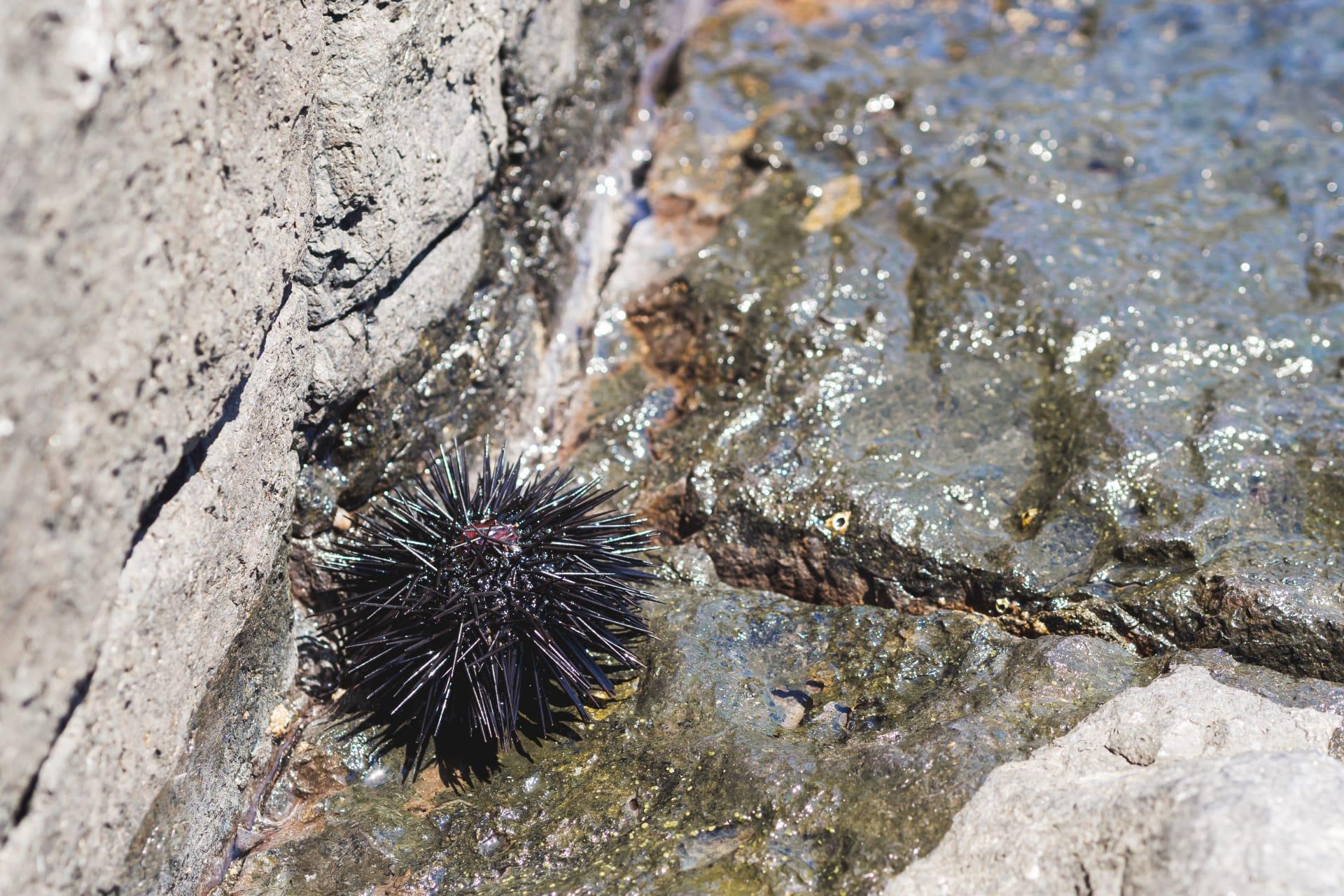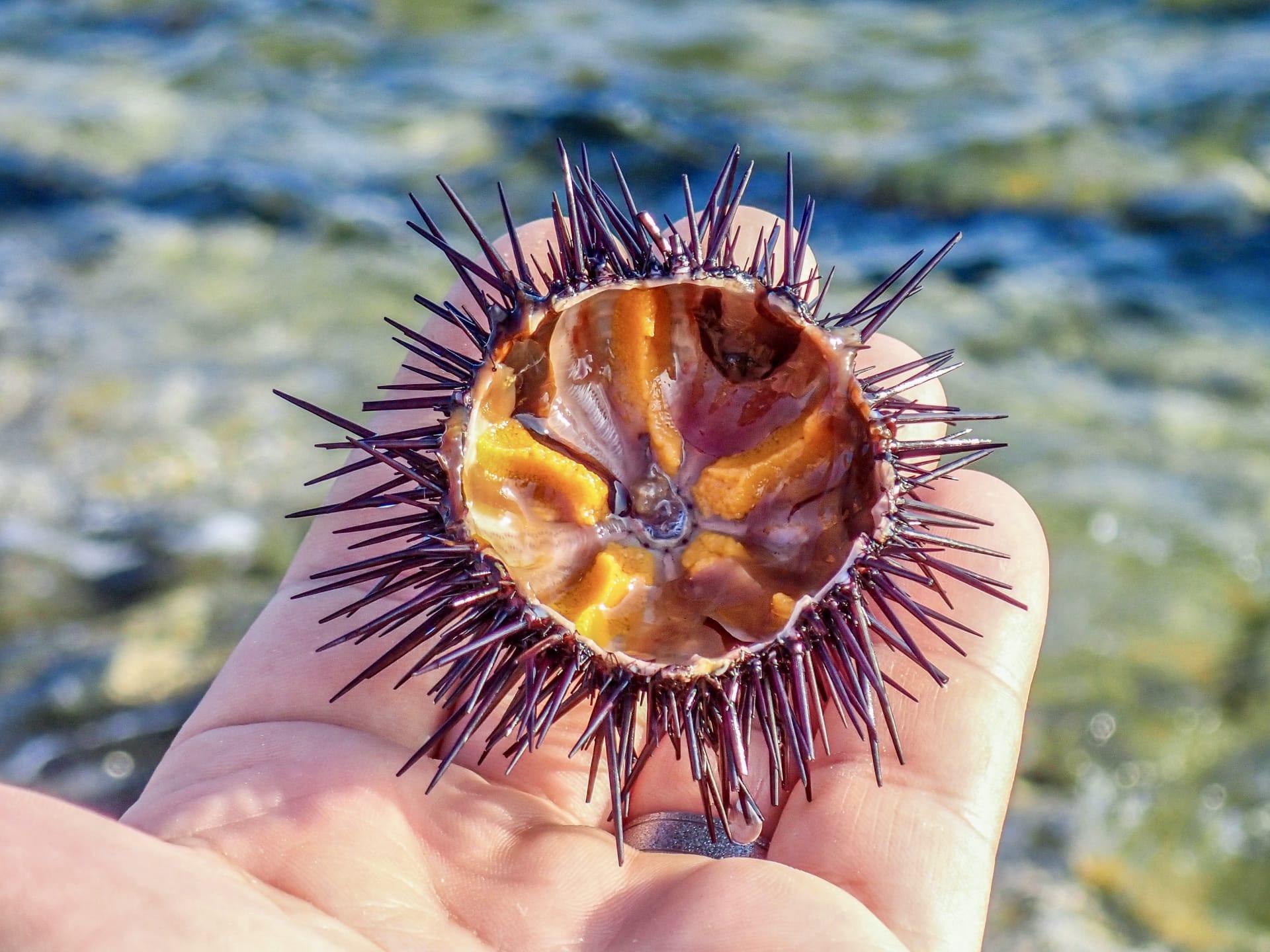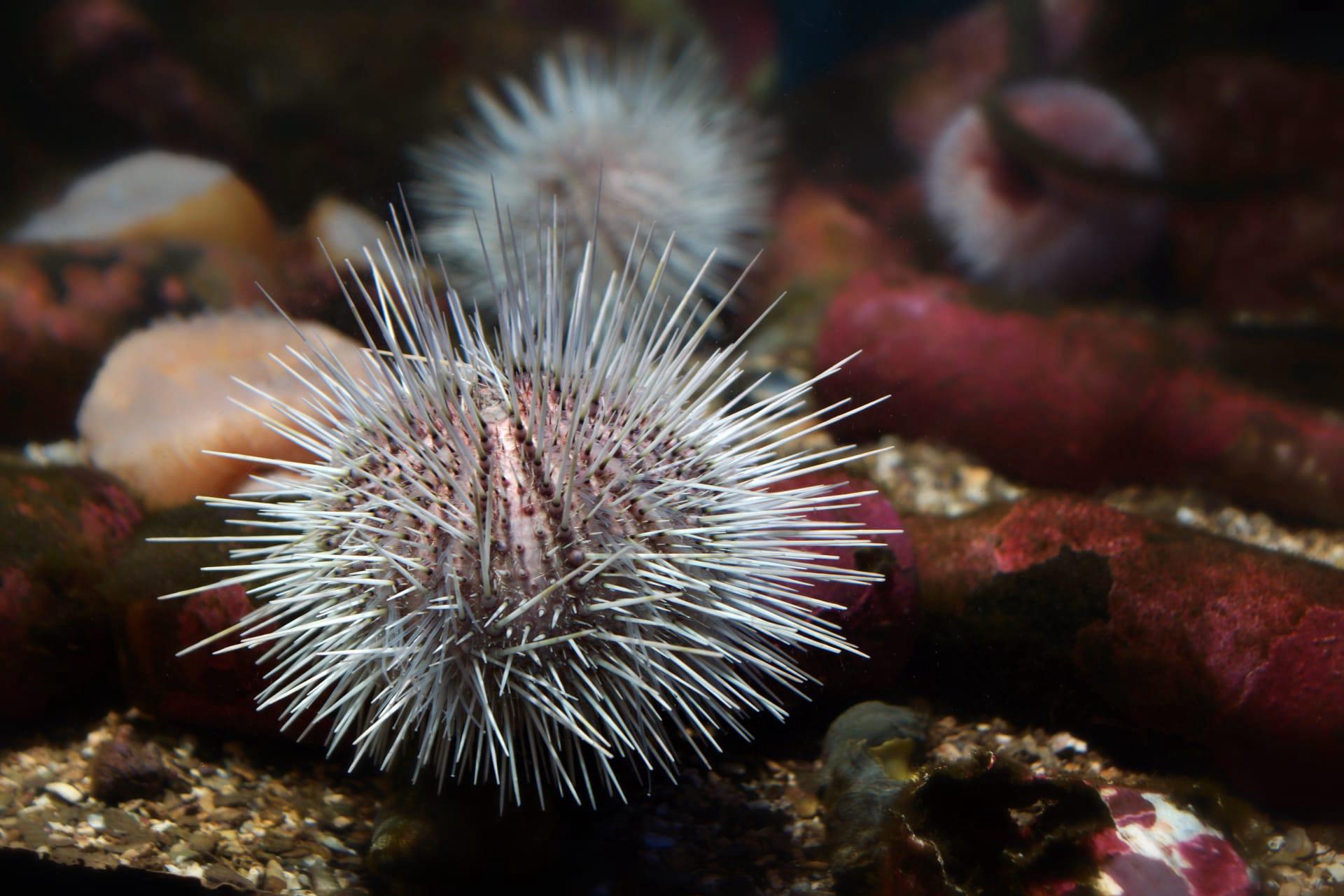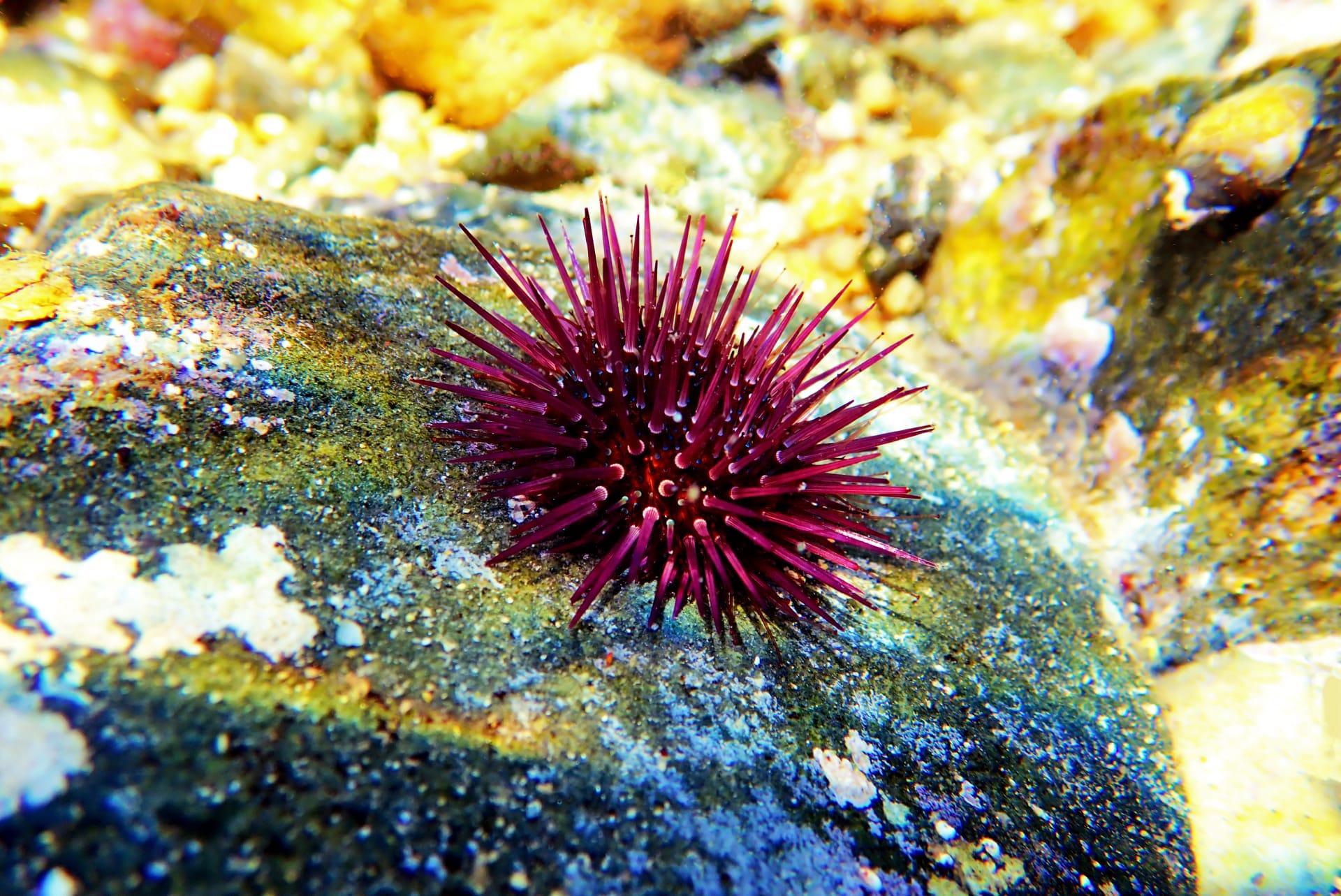Sea Urchin Trivia
- Home /
- Trivia Question /
- Animal /
- Sea Urchin Trivia
1
Question: What colors can sea urchins be, and does their color affect their behavior or habitat?
Answer: Sea urchins display a vivid array of colors, including red, purple, green, and black. Their color is primarily a form of camouflage, helping them blend into their environment, like hiding among seaweeds or corals. For instance, a bright purple sea urchin might be perfectly at home in a colorful coral reef, while a dark black one might be found in deeper, less light-filled waters.
Question: How long do sea urchins typically live, and what factors influence their lifespan?
Answer: Sea urchins can have quite a varied lifespan, ranging from 4 to 15 years, depending on species and environmental conditions. Factors like water temperature, salinity, and the availability of food greatly influence their longevity. For example, sea urchins in stable, nutrient-rich environments tend to live longer than those in fluctuating or nutrient-poor habitats.

2
Question: Is it true that all sea urchins are poisonous?
Answer: No, not all sea urchins are poisonous. While some species, like the flower urchin, have toxins that can be harmful, many are harmless to humans. The misconception likely arises from the fact that stepping on or handling them can be painful due to their sharp spines, but this isn't necessarily due to poison.
Question: Can sea urchins move, or are they stationary like corals?
Answer: Contrary to common belief, sea urchins are not stationary. They can move, albeit slowly, using their tube feet and spines. This movement helps them forage for food, escape predators, and even reshape their environment, like clearing algae from rocks.

3
Question: What do sea urchins eat, and how do they consume their food?
Answer: Sea urchins primarily feed on algae, but some species also consume small invertebrates. They use their unique structure, called Aristotle's lantern, which consists of five tooth-like plates, to graze and scrape algae off rocks and other surfaces.
Question: How do sea urchins reproduce, and what is unique about their reproductive process?
Answer: Sea urchins reproduce through a process called broadcast spawning, where females release eggs and males release sperm into the water simultaneously. This synchrony is crucial for successful fertilization. Interestingly, some species can release millions of eggs at once, making their reproductive events quite a spectacle in the ocean.

4
Question: Are sea urchins important for their ecosystems, and how do they impact their environment?
Answer: Absolutely, sea urchins play a vital role in their ecosystems. They help regulate algae growth, maintaining a balance that is crucial for reef health. However, overpopulation of sea urchins, often due to a decline in their natural predators, can lead to overgrazing and damage to coral reefs and kelp forests.
Question: Do sea urchins have any natural predators, and how do they defend themselves?
Answer: Sea urchins are preyed upon by various animals, including sea otters, starfish, and certain fish species. Their primary defense mechanism is their spines, which deter most predators. However, some predators, like sea otters, have adapted to handle these spines skillfully.

5
Question: Can sea urchins feel pain, and do they have a nervous system?
Answer: Sea urchins do have a nervous system, but it's quite primitive compared to mammals. While they can respond to harmful stimuli, it's unclear to what extent they experience pain as we understand it. Their nervous system is decentralized, lacking a true brain, but they can still process environmental information.
Question: Are sea urchins used by humans for any purposes, and are they considered safe to eat?
Answer: Yes, sea urchins are considered a delicacy in many cultures, especially in Japanese cuisine where they're known as "uni". They are safe to eat when properly prepared. Besides culinary uses, they are also studied in scientific research due to their unique embryological development and ecological significance.